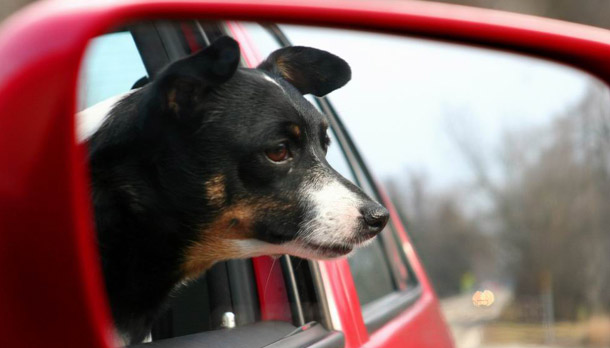PLAN CAREFULLY FOR VACATION WITH PET

As you arrange the details of your family’s summer vacation, you must also decide what to do with your four-legged friend: To bring, or not to bring? Here’s some advice for pet owners who plan to bring their pets along.
Whether or not to bring your animal on a trip is a decision that should be based on the individual animal. Weigh the benefits against the risks. Staying with a pet sitter or at a kennel might be a better option for animals that are geriatric or very young, need frequent medications, have ongoing medical conditions, or do not adapt well to stressful situations.
If you decide to bring your pet, keep in mind that travel with animals, like travel with small children, requires quite a bit of preparation.
Planning ahead is the most important part of travel with pets. The first consideration will be the mode of travel. Airline travel offers two options: in the cabin, for pets that fit in a small carrier, or in the cargo hold. Airlines have many restrictions on both options, including air temperatures—both minimum and maximum—at which pets cannot fly. Check frequently with your airline to learn about restrictions and fees.
If you will be traveling by car and your pet is not accustomed to long car rides, consider getting your pet used to being in the car by taking several short rides before the trip. It is also very important to restrain animals safely in the car using a carrier or harness combined with a seat belt. Unrestrained animals not only are at increased risk of injury in the event of an accident, but they also can cause car accidents by distracting or interfering with the driver.
Never, ever leave an animal in the car, even for short durations, such as when you stop at a restaurant. Within just a few minutes temperatures can exceed 120°F even with the windows cracked and on days when the outside temperature is moderate.
Animals left at high temperatures are at risk for deadly heat stroke, especially those that are old or young, are brachiocephalic (short-nosed) breeds like pugs and bulldogs, or have heart or lung conditions. Signs of heat stroke include excessive panting and salivation; weakness; collapse; and warm, dry skin. If you suspect your pet is suffering from heat stroke, do not reduce the pet’s temperature suddenly, such as by placing the animal in ice water. Instead, move the pet to a cool area and applying alcohol to the foot pads and cool water to the head. It is important to seek medical care from a veterinarian, because animals suffering from heat stroke can succumb to blood-clotting abnormalities and kidney failure.
When packing for your pet, don’t forget to bring extra food, dishes, leashes, toys, and vaccination records. Always have plenty of water available as well. Be sure to have an adequate supply of medications your pet takes. If an animal has a medical condition, we recommend calling your veterinarian before the trip for suggestions on how to care for your pet during travel. It is also helpful to know where a veterinary clinic is located at your destination.
Lastly, make sure your pet wears identification on its collar with a phone number that reaches you, whether that is your mobile phone or a voice mailbox you can access remotely.
For further information on travel with your pet, contact your local veterinarian.
